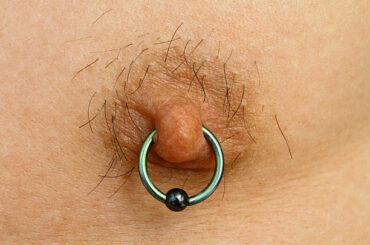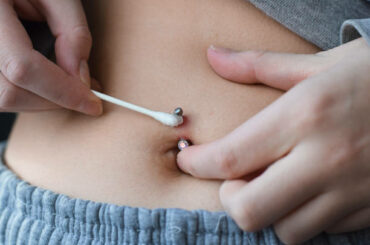Contents
How to unscrew a tight piercing ball without gloves
Unscrewing a tight piercing ball can often feel like a daunt task, especially when gloves aren’t readily available. For anyone with a piercing, this familiar struggle can lead to frustration and uncertainty. In this article, we will delve into the world of piercing maintenance, specifically addressing the common challenge of handling a tight piercing ball without the assistance of gloves. We aim to provide you with a set of practical tips and effective techniques to safely and confidently remove a piercing ball, ensuring a smooth and hassle-free experience. So, whether you’re a piercing enthusiast or simply seeking guidance for that tricky moment, read on to discover the secrets of mastering this essential skill.

Clean Hands: The First Step
Ensuring your hands are clean is the crucial first step in the process of unscrewing a tight piercing ball. Here, we’ll emphasize the significance of clean hands, explain why they are essential for successful unscrewing, and provide tips on proper hand hygiene.
Emphasizing the Importance of Starting with Clean Hands
Clean hands form the foundation of a successful piercing ball removal process. The cleanliness of your hands directly impacts your ability to grip and maneuver the piercing ball effectively. Dirty or oily hands can hinder your grip, making it difficult to unscrew the ball securely.
Why Clean Hands are Essential for Successful Unscrewing
Clean hands are essential for several reasons:
Improved Grip: Clean, dry hands provide a better grip on the piercing ball, reducing the risk of slipping or dropping it during the unscrewing process.
Hygiene: Maintaining hand hygiene helps prevent the transfer of dirt, bacteria, or other contaminants onto your piercing or jewelry, reducing the risk of infection or irritation.
Minimized Friction: Clean hands reduce friction between your fingers and the piercing ball, making it easier to turn without excessive force.
Overall Safety: Clean hands contribute to a safer and more hygienic piercing maintenance routine, promoting the long-term health of your piercing.
Offering Tips on Proper Hand Hygiene
To ensure that your hands are clean and ready for successful piercing ball removal, follow these tips for proper hand hygiene:
Wash Thoroughly: Wash your hands with warm water and soap for at least 20 seconds. Be sure to scrub between your fingers, under your nails, and up to your wrists.
Rinse and Dry: Rinse your hands thoroughly, and then dry them with a clean towel or paper towel. Avoid using a shared or dirty towel.
Avoid Hand Creams or Lotions: Refrain from using hand creams or lotions immediately before attempting to unscrew the piercing ball. These products can leave a slippery residue that makes grip difficult.
Use Hand Sanitizer (If Necessary): If soap and water are not available, you can use an alcohol-based hand sanitizer with at least 60% alcohol. Ensure your hands are fully dry before attempting to handle the piercing ball.
Starting with clean hands is a simple yet essential step that sets the stage for successful piercing ball removal. By following proper hand hygiene practices, you can ensure a safe and effective experience as you proceed with the unscrewing process.
Use of a Clean Cloth or Towel
In situations where gloves are unavailable, using a clean cloth or towel can be an effective alternative to improve your grip when unscrewing a tight piercing ball. In this section, we’ll discuss this alternative method, explain how to fold the cloth or towel for better grip, and highlight how it can enhance your ability to unscrew the piercing ball.
Discussing the Alternative of Using a Clean Cloth or Towel
When gloves are not at hand, a clean cloth or towel can serve as a valuable substitute to provide the grip you need to unscrew a tight piercing ball. The fabric’s texture and thickness can enhance your ability to hold and manipulate the jewelry securely without the risk of slippage.

How to Fold the Cloth or Towel for Better Grip
To make the most of this alternative method, follow these steps to fold the cloth or towel for better grip:
Select a Clean Cloth or Towel: Ensure that the cloth or towel you choose is clean and free from debris, as any foreign particles can affect your ability to grip the piercing ball effectively.
Fold into a Small Square: Lay the cloth or towel flat and fold it into a small square or rectangle. This will create multiple layers of fabric, providing additional thickness and padding to improve your grip.
Place Between Fingers and Piercing Ball: Hold the folded cloth or towel between your thumb and forefinger, positioning it between your hand and the piercing ball. The cloth should be in direct contact with the jewelry.
Highlighting How This Method Can Improve Your Ability to Unscrew the Piercing Ball
The use of a clean cloth or towel can significantly enhance your ability to unscrew a tight piercing ball in several ways:
Enhanced Grip: The fabric’s texture provides a secure grip on the piercing ball, reducing the chances of it slipping from your fingers during the unscrewing process.
Increased Traction: The multiple layers of the cloth or towel increase the traction between your fingers and the jewelry, making it easier to turn the ball.
Padding and Comfort: The added padding from the folded fabric can make the process more comfortable, especially when dealing with particularly tight or stubborn piercing balls.
Protection: Using a cloth or towel can protect your skin from any sharp edges or discomfort that might be associated with the piercing ball’s texture.
In situations where gloves are not accessible, utilizing a clean cloth or towel is a practical and effective alternative to ensure a secure grip and improve your ability to unscrew a tight piercing ball. This method enhances control and minimizes the risk of mishaps during the unscrewing process, making it a valuable tool for piercing maintenance.
The Pinch and Turn Technique
The “pinch and turn” technique is a reliable method for unscrewing a tight piercing ball without gloves. This technique involves a specific hand positioning and motion that provides the necessary grip and leverage to safely and effectively remove the ball. Below, we’ll describe the “pinch and turn” technique in detail, offering step-by-step instructions and emphasizing the importance of turning counterclockwise and using correct hand positioning.
Step-by-Step Instructions:
Position Your Fingers: Start by ensuring that your hands are clean and dry, as discussed earlier. Place your thumb and forefinger on either side of the piercing ball, pinching it firmly but not so tightly that it becomes difficult to turn.
Stabilize the Jewelry: Use your other hand to hold the jewelry in place, ensuring that the piercing itself remains steady. This prevents any unnecessary movement or twisting of the piercing during the unscrewing process.
Turn Counterclockwise: The key to the “pinch and turn” technique is to turn the piercing ball counterclockwise (to the left). This direction is the standard for most jewelry with threaded closures. Keep in mind that some piercings may have reversed threading, so double-check the direction before applying force.
Apply Steady Pressure: As you turn counterclockwise, apply steady and even pressure. Avoid sudden or jerky movements, as this can increase the risk of slipping or damaging the jewelry.
Use a Cloth or Towel (Optional): If you’re still finding it challenging to unscrew the piercing ball, you can employ the clean cloth or towel method described earlier. Place the cloth or towel between your fingers and the piercing ball to improve your grip.
Be Patient: Sometimes, piercing balls can be exceptionally tight, especially if they haven’t been removed in a while. Patience is essential. If you encounter resistance, avoid using excessive force, as this can lead to injury or damage.
Importance of Turning Counterclockwise and Correct Hand Positioning:
Counterclockwise Turning: Most jewelry with threaded closures is designed to be unscrewed counterclockwise. Turning in the opposite direction can cause the piercing ball to become even tighter. Always ensure you’re turning in the correct direction.
Correct Hand Positioning: Proper hand positioning is crucial to the success of the “pinch and turn” technique. Your thumb and forefinger should be positioned on opposite sides of the piercing ball to create a secure grip. This positioning minimizes the risk of slipping and maximizes control.
By following the “pinch and turn” technique, turning counterclockwise, and maintaining the correct hand positioning, you can safely and effectively unscrew a tight piercing ball without gloves. This method provides the necessary leverage and control to ensure a smooth and successful piercing maintenance experience.
Avoid Over-Tightening and Re-Tightening
The significance of not over-tightening the piercing ball when reattaching it cannot be overstated. It is crucial to stress the importance of finger-tightening to prevent future difficulties and to understand how over-tightening can make it harder to unscrew the ball.
Explain the Significance of Not Over-Tightening:
Over-tightening the piercing ball can have adverse effects on both the jewelry and the piercing site. It can lead to several issues:
Strain on the Jewelry: Excessive force can strain the threading on the piercing ball or the jewelry itself. This strain may weaken the material over time, increasing the risk of breakage or deformation.
Skin Discomfort: Over-tightened piercing balls can press against the skin, causing discomfort, irritation, or even pain. This discomfort can persist as long as the jewelry remains overtightened.
Difficulty Unscrewing: An over-tightened piercing ball can be exceptionally challenging to unscrew during future maintenance. The threading may become tightly locked, making it harder to remove without professional assistance.
Stress the Importance of Finger-Tightening:
To prevent these complications, it is essential to emphasize the importance of finger-tightening when reattaching the piercing ball. Finger-tightening means securing the ball firmly but without using excessive force or tools.
Here’s how to correctly finger-tighten the piercing ball:
Hold the piercing ball between your thumb and forefinger.
Gently turn it clockwise (righty tighty) onto the jewelry until it is snug.
Once snug, apply a tiny bit of additional pressure to secure it without overtightening.
Share Insights into How Over-Tightening Can Make It Harder to Unscrew:
Over-tightening creates a situation where the threading on the piercing ball becomes tightly locked onto the jewelry. This not only makes future unscrewing more difficult but can also lead to potential complications, including:
Stripped Threading: The threading on the piercing ball may become stripped due to excessive force during over-tightening. This damage can make it nearly impossible to unscrew without damaging the jewelry.
Need for Professional Help: In cases of severe over-tightening, where the threading is stripped or damaged, professional help from a piercer or healthcare provider may be required to safely remove the piercing ball.
By understanding the consequences of over-tightening and the importance of finger-tightening when reattaching the piercing ball, individuals can prevent future difficulties and ensure a smoother and safer piercing maintenance experience. This approach helps maintain both the integrity of the jewelry and the comfort of the piercing site.
Avoid Over-Tightening and Re-Tightening: Ensuring a Smooth Piercing Experience
When it comes to piercing maintenance, understanding the significance of not over-tightening the piercing ball when reattaching it is crucial for a smooth and hassle-free experience. In this section, we’ll stress the importance of finger-tightening to prevent future difficulties and share insights into how over-tightening can create unnecessary challenges during the unscrewing process.
The Significance of Not Over-Tightening:
Over-tightening the piercing ball can have several negative consequences:
Strain on the Jewelry: Excessive force during tightening can strain the threading on the piercing ball or the jewelry itself. This strain may weaken the material over time, increasing the risk of breakage or deformation.
Skin Discomfort: An over-tightened piercing ball can press against the skin, leading to discomfort, irritation, or even pain. This discomfort can persist as long as the jewelry remains overtightened.
Difficulty Unscrewing: Over-tightening creates a situation where the threading on the piercing ball becomes tightly locked onto the jewelry. This can make it significantly harder to unscrew the ball during future maintenance, potentially requiring professional assistance.

Stressing the Importance of Finger-Tightening:
To avoid these complications and ensure a hassle-free piercing experience, it is crucial to stress the importance of finger-tightening when reattaching the piercing ball. Finger-tightening means securing the ball firmly without resorting to excessive force or tools.
Here’s how to correctly finger-tighten the piercing ball:
Hold the piercing ball between your thumb and forefinger.
Gently turn it clockwise (righty tighty) onto the jewelry until it is snug.
Once snug, apply a tiny bit of additional pressure to secure it without overtightening.
Insights into How Over-Tightening Can Create Challenges:
Over-tightening leads to tightly locked threading on the piercing ball, making future unscrewing more challenging. Here’s how it can create complications:
Stripped Threading: Excessive force during over-tightening can strip or damage the threading on the piercing ball. This damage makes it nearly impossible to unscrew without damaging the jewelry.
Need for Professional Help: Severe over-tightening, where threading is stripped or damaged, may necessitate professional assistance from a piercer or healthcare provider to safely remove the piercing ball.
By avoiding over-tightening and adhering to proper finger-tightening techniques, individuals can prevent future difficulties and ensure a smooth and safe piercing maintenance experience. This approach helps preserve both the integrity of the jewelry and the comfort of the piercing site, ultimately leading to a more enjoyable and stress-free piercing journey.
Applying Lubricant (If Necessary)
In some cases, unscrewing a tight piercing ball may require the use of a water-based lubricant to reduce friction and make the process easier. In this section, we will discuss the option of using lubricant, explain how it can facilitate unscrewing, and provide guidance on applying and cleaning the piercing and jewelry after using lubricant.
Discussing the Option of Using a Water-Based Lubricant:
When faced with an exceptionally tight piercing ball, a water-based lubricant can be a valuable tool. Water-based lubricants are safe for use with most piercing materials and are less likely to cause irritation or adverse reactions compared to oil-based or silicone-based lubricants.
Explaining How Lubricant Can Make Unscrewing Easier:
Lubricants reduce friction between the threading of the piercing ball and the jewelry, making it significantly easier to unscrew. Here’s how lubricant facilitates the process:
Reduces Resistance: Lubricants create a slippery surface, reducing the friction that can make unscrewing challenging.
Minimizes Wear and Tear: By reducing friction, lubricants help minimize wear and tear on the threading of both the piercing ball and the jewelry, extending their lifespan.
Enhances Control: Lubrication provides smoother and more controlled movement, reducing the likelihood of slipping or applying excessive force.
Providing Guidance on Applying and Cleaning the Piercing and Jewelry After Using Lubricant:
If you decide to use a water-based lubricant to aid in unscrewing a tight piercing ball, follow these steps:
Select a Suitable Lubricant: Choose a water-based lubricant that is safe for use with piercings. Avoid oil-based or silicone-based products, as they can be less compatible with certain piercing materials.
Apply a Small Amount: Use a clean fingertip to apply a small amount of lubricant to the threading of the piercing ball. Be careful not to overapply; a little goes a long way.
Unscrew the Ball: With the lubricated threading, attempt to unscrew the piercing ball slowly and steadily using the “pinch and turn” technique described earlier.
Clean the Piercing and Jewelry: After successfully unscrewing the piercing ball, clean both the piercing and the jewelry thoroughly to remove any residual lubricant. Use a saline solution or a mild, fragrance-free soap and water to clean the area. Rinse and dry gently.
Reapply Lubricant Sparingly (If Necessary): If you encounter any resistance while reattaching the piercing ball, apply a small amount of lubricant to the threading again and try gently tightening the ball.
Dispose of Any Excess Lubricant: Dispose of any excess lubricant properly and ensure that it does not come into contact with the piercing site or jewelry when not in use.
Using a water-based lubricant can be an effective solution for unscrewing a tight piercing ball, but it should be done with care and moderation. Proper cleaning and maintenance after using lubricant ensure the continued health and comfort of your piercing.
Seek Assistance When Needed
Sometimes, despite your best efforts, unscrewing a tight piercing ball can be a challenging endeavor. In such situations, it’s essential to encourage readers to seek assistance when needed. This section will emphasize the importance of asking for help from friends or family members and highlight the benefits of having an extra pair of hands to provide leverage.
Encourage Readers to Ask for Help:
Don’t Hesitate to Ask: The first and most crucial piece of advice is not to hesitate when you’re facing difficulty. If you find yourself struggling to unscrew the piercing ball, it’s perfectly acceptable to seek help.
Reach Out to Friends or Family: Ask friends or family members for assistance, especially if they are willing and available. They can provide valuable support in overcoming the challenge.
Highlight the Benefits of Having an Extra Pair of Hands:
Leverage and Stability: An extra pair of hands can provide leverage and stability, making it easier to apply controlled force when unscrewing the piercing ball. This can significantly reduce the risk of slipping or using excessive force.
Enhanced Precision: With assistance, you can achieve more precise and coordinated movements, ensuring a smoother and safer removal process.
Peace of Mind: Having someone else help can offer peace of mind, reducing stress and anxiety associated with struggling to unscrew the piercing ball alone.
Prevention of Accidents: Seeking help also minimizes the chances of accidents or injuries that may occur when attempting to force the piercing ball open with limited control.
Remember, seeking assistance is a responsible and sensible approach when faced with a challenging piercing ball. It not only ensures a safe and smooth maintenance experience but also fosters a sense of community and support among friends and family. So, don’t hesitate to reach out for that extra pair of hands when needed—it can make all the difference.

Conclusion
In conclusion, the process of unscrewing a tight piercing ball without gloves may appear challenging at first glance, but with the right approach, it can be accomplished smoothly and safely. Throughout this article, we have covered several key points to guide you through this essential aspect of piercing maintenance.
Clean Hands Matter: We highlighted the significance of starting with clean hands, emphasizing the role of hand hygiene in ensuring successful piercing ball removal.
Using a Clean Cloth or Towel: When gloves are unavailable, using a clean cloth or towel can enhance your grip and make unscrewing easier.
The Pinch and Turn Technique: We provided detailed step-by-step instructions for the “pinch and turn” technique, emphasizing the importance of turning counterclockwise and using correct hand positioning.
Avoid Over-Tightening and Re-Tightening: We explained the potential complications of over-tightening the piercing ball and stressed the importance of finger-tightening to prevent future difficulties.
Applying Lubricant (If Necessary): In cases of extreme tightness, we discussed the option of using a water-based lubricant to reduce friction and guided its safe application and cleaning afterward.
Seek Assistance When Needed: We encouraged readers to seek help from friends or family members when faced with challenging piercing balls and highlighted the benefits of having an extra pair of hands to provide leverage.
Throughout this article, we’ve underscored the importance of maintaining clean hands, applying proper technique, and exercising caution when unscrewing a tight piercing ball without gloves. These principles are fundamental to a successful and safe piercing maintenance routine.
As you embark on your piercing maintenance journey, we encourage you to follow the provided tips and techniques. Remember that patience and diligence are your allies in this process. By doing so, you can ensure that your piercing maintenance experience is not only successful but also enjoyable and free of unnecessary complications.




